
Dr. Mario is a 1990 puzzle video game developed and published by Nintendo for the Nintendo Entertainment System and Game Boy. It was produced by Gunpei Yokoi and designed by Takahiro Harada. The soundtrack was composed by Hirokazu Tanaka.
A stealth game is a type of video game in which the player primarily uses stealth to avoid or overcome opponents. Games in the genre typically allow the player to remain undetected by hiding, sneaking, or using disguises. Some games allow the player to choose between a stealthy approach or directly attacking antagonists, but rewarding the player for greater use of stealth. The genre has employed espionage, counter-terrorism, and rogue themes, with protagonists that are special forces operatives, special agents, secret agents, thieves, ninjas, or assassins. Some games have also combined stealth elements with other genres, such as first-person shooters and also platformers.
Dr. Brain is a series of educational games introduced by Sierra On-Line in 1992. The objective of each game is to solve a series of puzzles to aid characters named Dr. Brain who changed from title to title. After Sierra was acquired by CUC International in 1996, the series would be continued by their Knowledge Adventure division who turned it into a more action-oriented game.
In tabletop games and video games, game mechanics specify how a game works for the players. Game mechanics include the rules or ludemes that govern and guide player actions, as well as the game's response to them. A rule is an instruction on how to play, while a ludeme is an element of play, such as the L-shaped move of the knight in chess. The interplay of various mechanics determines the game's complexity and how the players interact with the game. All games use game mechanics; however, different theories disagree about their degree of importance to a game. The process and study of game design includes efforts to develop game mechanics that engage players.

Animaniacs is a series of platform video games developed by Konami, based on the Animaniacs TV series. Two games were developed featuring significantly different gameplay and storylines; one for Super Nintendo Entertainment System, and one for the Sega Mega Drive/Genesis and Game Boy. The SNES and Genesis versions were released in 1994, and the Game Boy version in 1995.
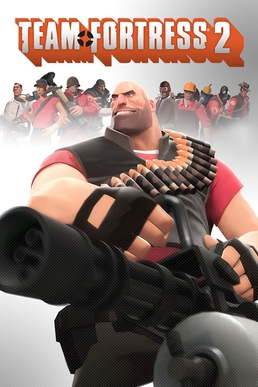
Team Fortress 2 (TF2) is a multiplayer first-person shooter game developed and published by Valve Corporation in 2007. It is the sequel to the 1996 Team Fortress mod for Quake and its 1999 remake, Team Fortress Classic. The game was released in October 2007 as part of The Orange Box for Microsoft Windows and the Xbox 360, and was ported to the PlayStation 3 in December 2007. It was released as a standalone game for Windows in April 2008, and updated to support macOS in June 2010 and Linux in February 2013. It was made free-to-play in June 2011, and is distributed online through Valve's digital retailer, Steam.

Fallout Tactics: Brotherhood of Steel is a turn-based real-time tactical role-playing game set in the post-apocalyptic Fallout universe. Developed by Micro Forté and published by 14 Degrees East, Fallout Tactics was released on 14 March 2001 for Microsoft Windows. It had sold over 300,000 units worldwide by 2008.
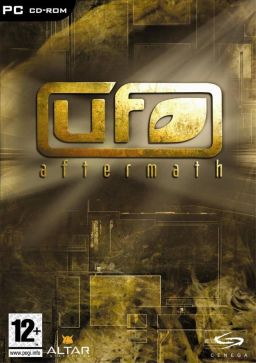
UFO: Aftermath is a 2003 real-time tactics/turn-based strategy video game created by ALTAR Interactive. It is a homage to the X-COM game series, with roots in the unfinished game The Dreamland Chronicles: Freedom Ridge. It was followed by two sequels, UFO: Aftershock (2005) and UFO: Afterlight (2007).

Brain Age 2: More Training in Minutes a Day!, known as More Brain Training from Dr Kawashima: How Old Is Your Brain? in PAL regions, is an edutainment puzzle game and the sequel to Brain Age: Train Your Brain in Minutes a Day! (2005). It was developed and published by Nintendo for the Nintendo DS handheld game console. Before the game begins, the player must perform a Brain Age Check to determine their brain age, which ranges from 20 to 80, to determine approximately their brain's responsiveness. A brain age of 20, the lowest age that the player can achieve, indicates that the player's brain is as responsive as that of an average 20-year-old. After the player is told their initial brain age, they can complete a series of minigames to help improve their brain's responsiveness, after which they can run Brain Age Check again to determine their updated brain age.

Castle of Dr. Brain is an educational video game released in 1991 by Sierra On-Line. It is a puzzle adventure game.

The Invasion is a 2007 American science fiction horror film directed by Oliver Hirschbiegel, written by David Kajganich, and starring Nicole Kidman and Daniel Craig. Unhappy with the original cut of the film, the studio hired The Wachowskis for additional writing and James McTeigue to re-shoot some scenes. The plot follows a psychiatrist (Kidman) in Washington, D.C. who finds those around her turning into emotionless beings shortly after a Space Shuttle crashes to Earth, bringing with it mysterious alien spores.
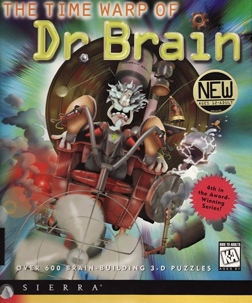
The Time Warp of Dr. Brain is the fourth installment of the educational game series Dr. Brain by Sierra On-Line. The game's structure is similar to its predecessor, The Lost Mind of Dr. Brain: the player must complete several puzzles which appeal to a specific part of the brain; however, this game also adds a time-period based theme to each puzzle and the game's theme overall is time travel.
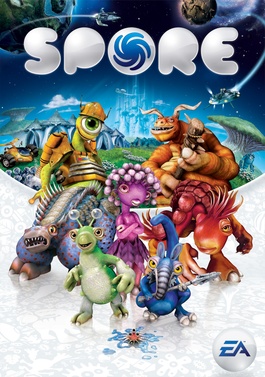
Spore is a 2008 life simulation real-time strategy god game developed by Maxis and published by Electronic Arts for Microsoft Windows and Mac OS X. Designed by Will Wright, it covers many genres including action, real-time strategy, and role-playing games. Spore allows a player to control the development of a species from its beginnings as a microscopic organism, through development as an intelligent and social creature, to interstellar exploration as a spacefaring culture. It has drawn wide attention for its massive scope, and its use of open-ended gameplay and procedural generation. Throughout each stage, players are able to use various creators to produce content for their games. These are then automatically uploaded to the online Sporepedia and are accessible by other players for download.

MAG was a 2010 massively multiplayer online first-person shooter video game developed by Zipper Interactive and published by Sony Computer Entertainment for the PlayStation 3. MAG received an award from Guinness World Records as "Most Players in a Console FPS" with 256 players.
Brain Age, known as Dr Kawashima's Brain Training in PAL regions, is a series of video games developed and published by Nintendo, based on the work of Ryuta Kawashima.

Spore Hero is 2009 action-adventure game developed by EA Montreal and published by Electronic Arts. It is a Nintendo Wii spin-off of Spore in which the players focus on creativity and evolution using the controls of the Wii. The game was released in October 2009.

Inspector Gadget: Mission 1 – Global Terror! is a graphic adventure game based on the animated television series Inspector Gadget. It was published by Azeroth for MS-DOS compatible operating systems in 1992. Gadget is assigned a mission to rescue United Nations members who have been kidnapped and scattered around the world by his nemesis Dr. Claw. Players control Gadget's niece Penny and her dog Brain to assist the clueless Gadget in his mission. Despite the "Mission 1" label, this is the only game in the series.

The Walking Dead: A New Frontier is a 2016 episodic graphic adventure video game based on the comic book series of the same name developed by Telltale Games. It is the sequel to The Walking Dead: Season Two, and the third game in The Walking Dead video game series. The first two episodes were released on December 20, 2016, while a retail season pass disc edition was released on February 7, 2017. The game employs the same narrative structure as the past seasons, where player choice in one episode will have a permanent impact on future story elements. The player choices recorded in save files from the first two seasons and the additional episode 400 Days carry over into the third season.

Baldur's Gate 3 is a 2023 role-playing video game developed and published by Larian Studios. It is the third main installment of the Baldur's Gate series, based on the tabletop fantasy role-playing game Dungeons & Dragons. A partial version of the game was released in early access for macOS and Windows in October 2020 until the full release for Windows in August 2023, with versions for PlayStation 5, macOS, and Xbox Series X/S releasing later that year.
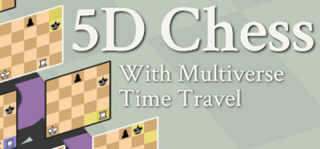
5D Chess with Multiverse Time Travel is a 2020 chess variant video game released for Microsoft Windows, macOS, and Linux by American studio Thunkspace. Its titular mechanic, multiverse time travel, allows pieces to travel through time and between timelines in a similar way to how they move through ranks and files.
















